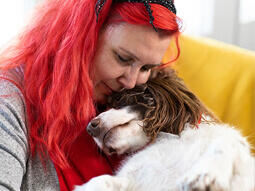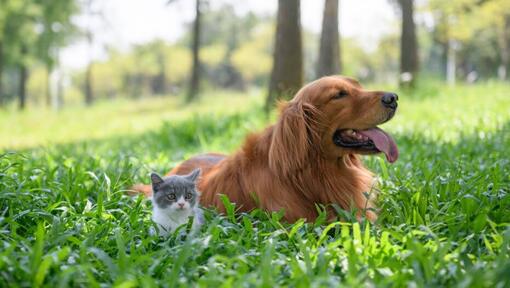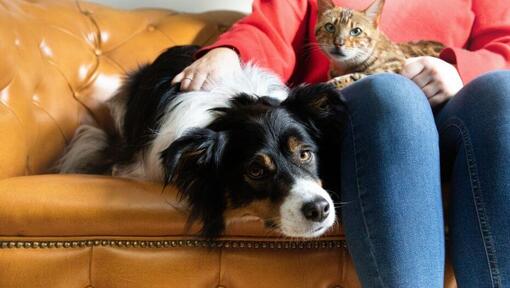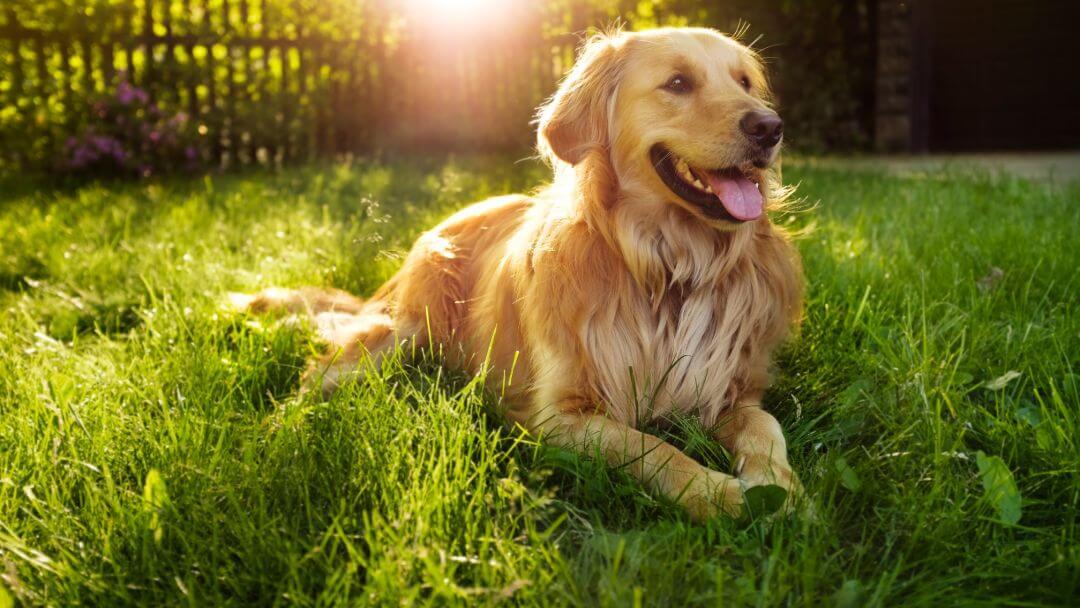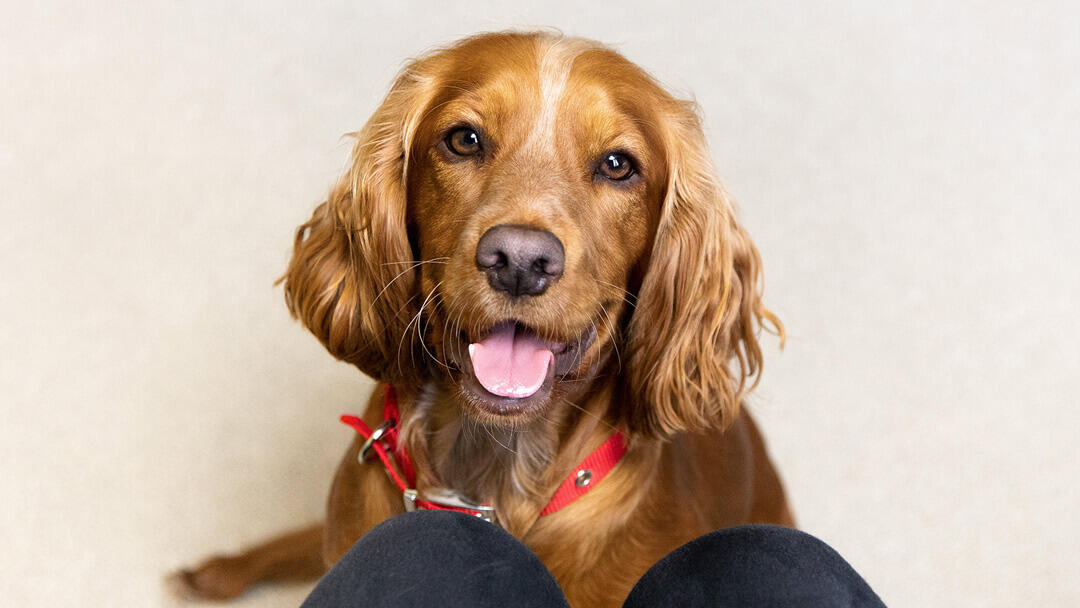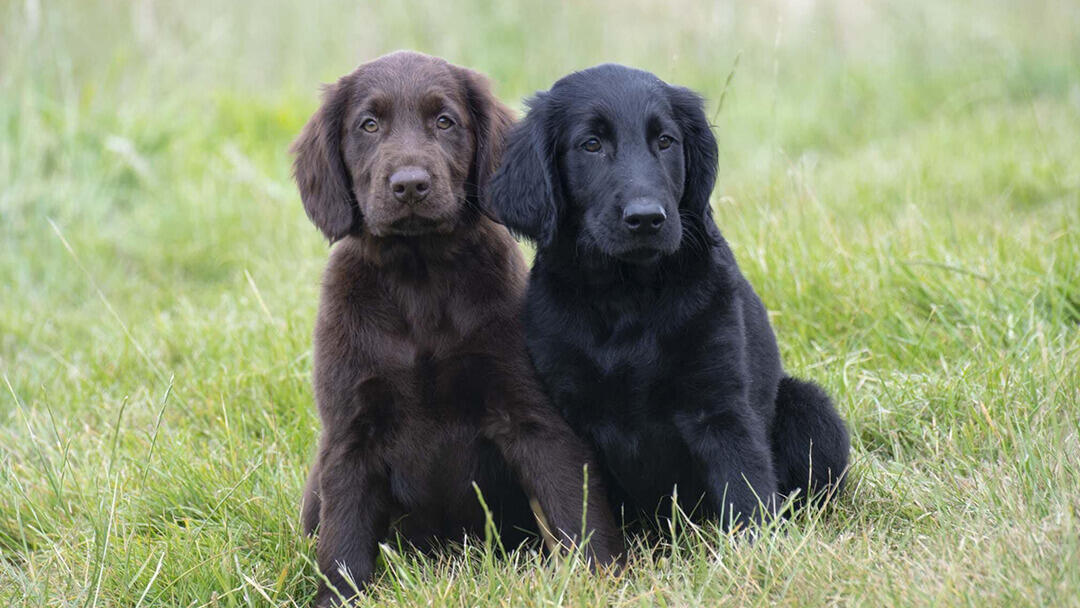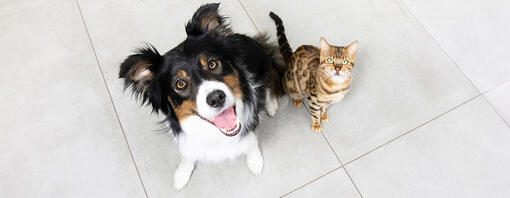
The rivalry between cats and dogs is world renowned and many believe that the two species can't get along because they're just too different. Keep reading to discover the reasoning behind why they could distrust each other and find out if it's possible for them to be friends with Purina.
The rivalry between cats and dogs is one that’s known around the world. It’s depicted time after time in cartoons and films and you’ve probably heard of the saying ‘they fight like cats and dogs.’ Many believe that the two species can’t get along and that it’s just a simple case of them being too different from one another, as dogs are often exuberant and full of energy, while cats are generally more solitary creatures who prefer peace and quiet. But what’s the actual reason behind the potential battle of the species’, and most importantly, can they ever get along?
Keep reading to find out about the possibility of cat and dog friends and discover the reasoning behind why they are thought of as being legendary enemies.
Mixed messages
They speak a different language!
Where it’s sometimes the case of opposites attract, this doesn’t seem to be the case with cats and dogs. One of the things often getting in the way of a harmonious friendship is that cat and dog body language often means different things.
With a dog, a high tail and head often means that they’re challenging the other individual, while in cats this is often a signal that they want to be friends. A wagging tail also means the opposite thing in the two species, as the swishing back and forth of a tail can indicate a happy and excited dog, but an angry cat.
Because their body language is so different, they often misinterpret each other which results in plenty of scratched noses and frightened and confused cats and dogs.
However, this doesn’t mean that they’re incompatible by nature, they just need careful introductions in an environment where they can get used to each other’s differences – and learn to speak or at least understand, each other’s languages. So, how do help encourage your cat and dog to become friends with each other?
First impressions are vital
The trick to helping your cat and dog become friends is to start with the right introductions. Cats are far less likely to be open to the situation if it goes badly or to then give it a second chance, so it’s very important that the first encounter goes well, and the cat is neither chased or frightened – or feels they have to defend themselves.
Take your time with the introductions and always give your cat an easy escape route. If your puppy or dog is crate trained or can be in a play pen, allowing your cat to come and go freely and investigate the dog in their own time, without any danger of being chased, will give your feline confidence. It will also give your dog a chance to see the cat, watch them moving around but not give them the opportunity to chase or greet them too over-enthusiastically.
You can let them sniff each other before meeting face-to-face by using their bedding or something else that they frequently use. This is particularly useful if you are bringing home a puppy to an existing cat. This will allow them to familiarise themselves with the other’s scent before they meet and get used to each other a little at a time and will hopefully make the first meeting a little less stressful for both. Never put your dog and cat into a situation where they chase each other in these early days. That will ruin any confidence your cat has and will teach the dog that cats are fun to chase!
It’s easier when they’re young
Cats and dogs are much more likely to become friends if they meet each other from the very start, as they’ll be able to grow up together and learn how the other wants them to behave as they’re still discovering the world around them. When they’re young they’re more likely to be open to a friendship as chase behaviours and fear instincts are not fully developed.
Introducing a young puppy to an older cat can also work well if the cat is confident – especially if the pup has come from a breeder who also has cats, and so is used to having them around.
Introducing older cats and dogs
If you’re introducing older cats and dogs, there are a few things you can do to try and make the situation less stressful for them both.
Set up baby gates in doorways that your cat can get through but the dog won’t be able to. This gives them an easy escape route if they need it or if the introductions are getting a bit intense. You can also make sure you give your cat has higher areas they are familiar with that they can access where your dog can’t reach.
This will give them the option of a retreat and a quiet space with the opportunity to have some cat time – or just watch the dog from a safe distance - without the possibility of being intercepted by them. Even if the dog is being friendly and wants to play, this can be a little too much for your cat, so these quiet areas will help your cat feel in control and that they can leave whenever they want to. This should help make them more open to becoming friends.
If you think your dog might chase the cat, keep them on a lead or behind a play pen.
It’s also essential to ensure that your dog gets enough exercise and mental enrichment, as an excitable dog that’s bored and full of energy is more likely to chase and bother a cat than if they get plenty of stimulation from playing with you, having lots of brain games, and getting frequent daily walks.
Are there any specific dog breeds that are good with cats?
There are lots of breeds that are traditionally thought of as being good with cats – including some of the gundog breeds and some of the companion breeds. Other breeds are thought of as being less good with them – such as terriers and hounds.
It’s often not a good idea to rely on a certain dog breed to be good with cats however as it isn’t a guarantee that your pets will get along, as it depends heavily on the personalities and natures of them both. It also depends on their early experiences – and a puppy raised in a house with lots of cats could quite easily be happy to make friends with other felines whatever their breed – while others could be advertorial from the start. So don’t just choose a breed that is known to be more cat friendly, also choose a breeder who includes cats in their early socialisation.
Also think hard about whether your existing pet would welcome a new addition and you should consider their needs first.
A nervous, timid cat who lacks confidence might struggle with any dog you try to introduce into the household. This is something to consider before thinking about bringing a dog into the household at all. They certainly won’t be a good match for an excitable dog, whatever the breed so if you really want a dog in your life, consider an older dog who has already lived with cats.
A dog who loves to chase everything that moves, might never co-exist happily with a cat and having them moving around could be overly stimulating.
Sometimes despite your best efforts, they might just be too different and if that’s the case and they’re finding it difficult to coexist, don’t force it. If possible, give them both enough space to live their own separate lives and ensure that they both have their own places they can go to escape each other.
Remember that it takes time, and a cat and dog friendship won’t just happen overnight. It’s all about making the right first impressions and giving them plenty of time to adjust.
For more essential information on understanding dog behaviours, take a look at our content hub, packed full of handy guides and advice.

